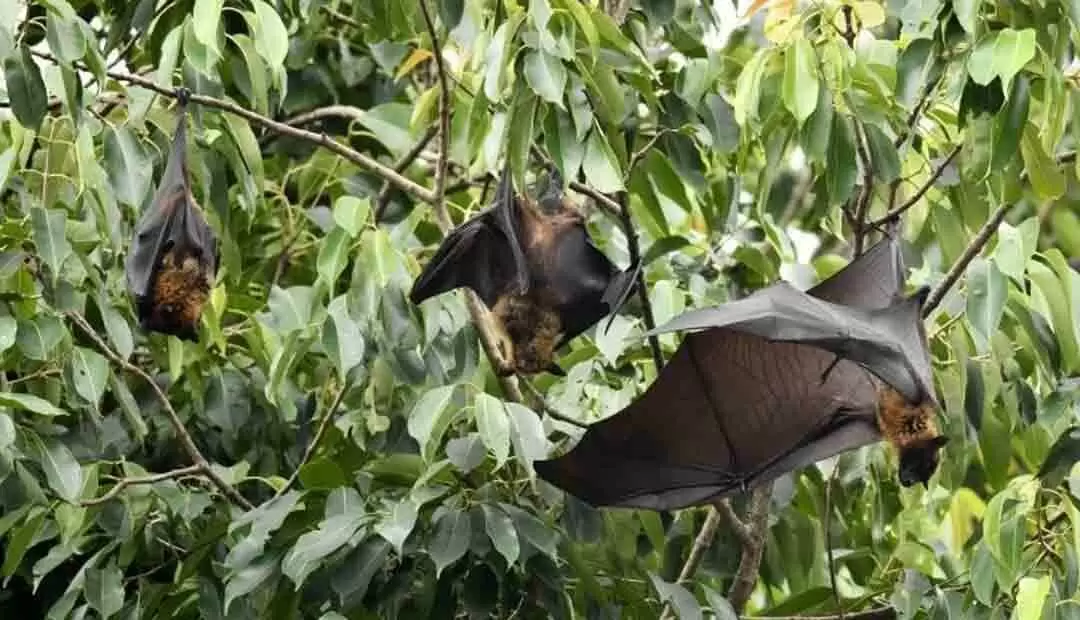Covid-19 virus has been circulating in bats for decades: Study
NEW YORK
29-July-2020

Photo: IANS
An international team of researchers has discovered that the lineage that gave rise to the SARS-CoV-2, the virus that is responsible for the Covid-19 pandemic, has been circulating in bats for decades and likely includes other viruses with the ability to infect humans.
"Coronaviruses have genetic material that is highly recombinant, meaning different regions of the virus's genome can be derived from multiple sources," said study researcher Maciej Boni from Penn State University in the US.
"This has made it difficult to reconstruct SARS-CoV-2's origins. You have to identify all the regions that have been recombining and trace their histories. To do that, we put together a diverse team with expertise in recombination, phylogenetic dating, virus sampling, and molecular and viral evolution," Boni added.
The team used three different bioinformatic approaches to identify and remove the recombinant regions within the Covid-19 virus genome.
Next, they reconstructed phylogenetic histories for the non-recombinant regions and compared them to each other to see which specific viruses have been involved in recombination events in the past.
They were able to reconstruct the evolutionary relationships between Covid-19 virus and its closest known bat and pangolin viruses.
Watch This TWL Video
The researchers found that the lineage of viruses to which Covid-19 virus belongs diverged from other bat viruses about 40-70 years ago.
Importantly, although SARS-CoV-2 is genetically similar (about 96 per cent) to the RaTG13 coronavirus, which was sampled from a Rhinolophus affinis horseshoe bat in 2013 in Yunnan province, China, the team found that it diverged from RaTG13 a relatively long time ago, in 1969.
"The ability to estimate divergence times after disentangling recombination histories, which is something we developed in this collaboration, may lead to insights into the origins of many different viral pathogens," said study researcher Philippe Lemey.
The team found that one of the older traits that SARS-CoV-2 shares with its relatives is the receptor-binding domain (RBD) located on the Spike protein, which enables the virus to recognize and bind to receptors on the surfaces of human cells.
"This means that other viruses that are capable of infecting humans are circulating in horseshoe bats in China," said study researcher David L Robertson from the MRC-University of Glasgow Centre for Virus Research.
The team concluded that preventing future pandemics will require better sampling within wild bats and the implementation of human disease surveillance systems that are able to identify novel pathogens in humans and respond in real-time. - IANS
More Headlines
Bajrang Dal Appeals to Ban Oyo Check-Ins for Unmarried Couples in Bengaluru
Heavy Rains Predicted In Five TN Districts On January 11
Cold Wave Grips Rajasthan: Fatehpur Hits 1.1°C, Nagaur 1.7°C
Actor Ajith Kumar Escapes Unharmed After Crash During 24H Dubai Practice
32 Dead As 7.1 Magnitude Earthquake Strikes Nepal-Tibet Border
Bajrang Dal Appeals to Ban Oyo Check-Ins for Unmarried Couples in Bengaluru
Heavy Rains Predicted In Five TN Districts On January 11
Cold Wave Grips Rajasthan: Fatehpur Hits 1.1°C, Nagaur 1.7°C
Actor Ajith Kumar Escapes Unharmed After Crash During 24H Dubai Practice
32 Dead As 7.1 Magnitude Earthquake Strikes Nepal-Tibet Border










